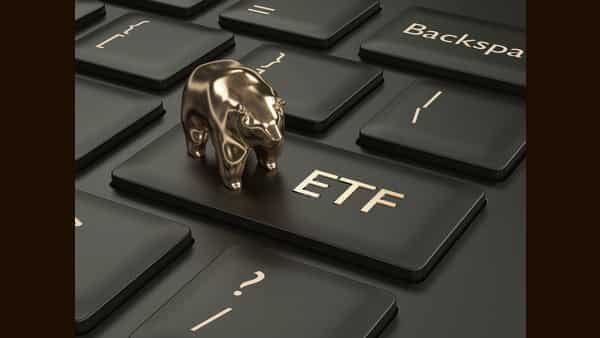India’s gold ETFs start switching to derivatives over physical gold

Kotak Mahindra Asset Management Company Ltd has decided to change the fundamental attributes of its gold exchange-traded fund (ETF), the fund house said in a notice recently.
Kotak Gold ETF is an open-ended scheme replicating or tracking physical gold prices.
The existing investment objective of the scheme is to generate returns that are in line with the returns on investment in physical gold, subject to tracking errors.
As per the latest notice, the scheme may also participate in gold-related instruments. “Exchange Traded Commodity Derivatives (ETCDs) having gold as the underlying shall be considered as a gold-related instrument for gold ETFs,” the fund house said in a release.
Commodity derivatives are financial instruments that allow investors to profit from commodities without actually owning them. A derivatives contract entails the right to exchange a commodity at a later date for a specified price.
The scheme may now deploy in ETCDs with gold as underlying up to 50% of the net asset value (NAV) of the scheme, which is as per the regulatory norms.
According to Nilesh Shah, group president and managing director at Kotak Mahindra Asset Management Company, the fund house is looking to participate in gold futures as they are cost effective.
“If we see some opportunities in different futures contracts, we could use them to enhance some returns for unitholders,” said Lakshmi Iyer, chief investment officer (debt) and head of products at Kotak Mahindra Asset Management Ltd.
According to the scheme document, the Kotak’s gold ETF may also have 0-5% allocation to debt and money market instruments.
Kotak Gold ETF was launched in July 2007, and today has assets under management of ₹2,357 crore as of 30 September.
As per data available with Valueresearchonline, the scheme has delivered an annualized return of 11.07% since inception and returns of 5.62%, 8.60%, and 10.72%, respectively, on one-year, three-year and five-year basis.
Markets regulator the Securities and Exchange Board of India (Sebi) had first allowed Indian mutual funds to participate in the derivatives segment in 2019.
However, some fund houses haven’t yet taken exposure to ETCDs.
For example, as per the scheme information document (SID) of India’s biggest gold fund — Nippon India ETF Gold BeES (AUM of ₹6,532 crore) — the scheme doesn’t have exposure to ETCDs.
Another fund house, Quantum Mutual Fund also doesn’t hold ETCDs in its gold fund.
“The incremental cost benefits that accrue from lower storage costs in case of exposure through ETCDs gets offset by the rollover costs to carry forward the derivative position. Also, the quality of underlying gold could differ in ETCDs compared to the physical gold held by gold ETFs,” said Ghazal Jain, fund manager at Quantum AMC.
Quantum Gold Fund has an AUM of ₹141 crore as of 30 September and has returned 3.69%, 7.97% and 10.28% on one-year, three-year and five-year basis, respectively.
Download Finplay News App to get Daily Market Updates & Live Business News.
More
Less
